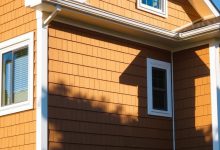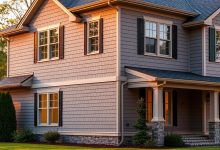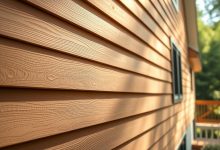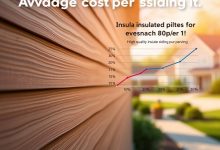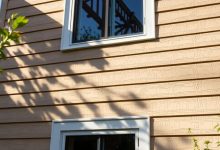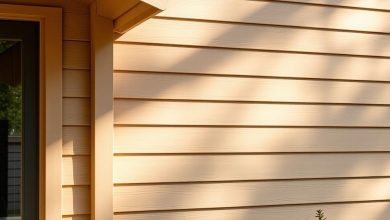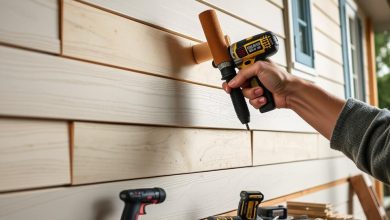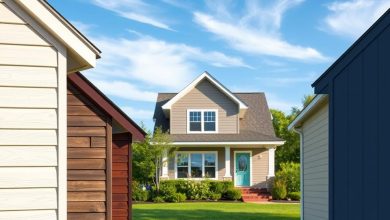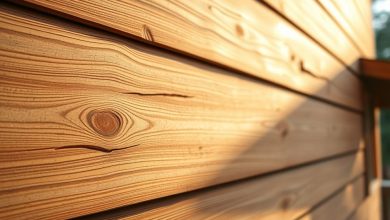Is Insulated Siding Worth the Investment?
Homeowners often think about home improvement projects. They look at the pros and cons of different options. One choice is insulated siding, which can really help with energy use and home value.
When improving their homes, it’s key to know about siding options. Insulated siding stands out because it looks good and works well. This makes it a popular pick for many.
Choosing the right siding can make your home look better and keep it warmer. This piece will dive into insulated siding. We’ll see if it’s a smart choice for homeowners.
Key Takeaways
- Insulated siding can improve a home’s energy efficiency.
- It offers a unique blend of aesthetic appeal and functional benefits.
- Understanding siding options is key for homeowners.
- Insulated siding can enhance a home’s curb appeal.
- It can be a valuable investment for homeowners.
What Is Insulated Siding?
Homeowners are looking for ways to save energy, and insulated siding is a top choice. It’s a modern siding option that’s more energy-efficient than traditional ones.
Definition and Components
Insulated siding has several parts: the outer siding, insulation, and sometimes a backing. The outer layer can be vinyl, fiber cement, or other materials. The insulation, usually foam, is what makes it special. It has a higher R-value for better thermal performance.
This combination makes the siding look good and save energy. Some benefits are:
- Improved energy efficiency
- Better thermal performance
- Potential cost savings
How It Differs from Traditional Siding
Insulated siding has an extra insulation layer, unlike traditional siding. Traditional siding mainly protects the home and looks good. But insulated siding does all that and saves more energy.
Key differences are:
- A higher R-value from the insulation
- Better thermal bridging resistance
- Potential for lower energy bills
Knowing about insulated siding helps homeowners choose wisely. It can lead to better energy use and lower costs.
The Science Behind Insulated Siding
Insulated siding works by stopping heat from moving between the outside and inside of your home. This makes your home more energy-efficient. It also helps lower your energy bills and makes your home more comfortable.
R-Value Explained
The R-value shows how well a material keeps heat from moving. For insulated siding, a higher R-value means it insulates better. This means it keeps heat in during winter and out during summer.
The R-value depends on the insulation type and thickness. Foam-backed siding usually has an R-value of R-3 to R-5. This is very good for keeping your home insulated.
Thermal Bridging Prevention
Thermal bridging happens when heat escapes through the siding. This often occurs at joints or where siding meets windows and doors. Insulated siding stops this by covering your home’s exterior with a single layer of insulation.
This reduces heat loss and keeps your home’s temperature steady. It makes your home more energy-efficient.
Continuous Insulation Benefits
Continuous insulation means your home’s exterior is fully covered in insulation. This method stops heat from getting through. It makes your home more energy-efficient, lowers your bills, and makes it more comfortable.
Insulated siding acts as a barrier against heat. This leads to big energy savings for homeowners over time.
Material Options for Insulated Siding
Homeowners have many choices for insulated siding, like vinyl, fiber cement, and foam backing. The material you pick affects how well it works, lasts, and looks.
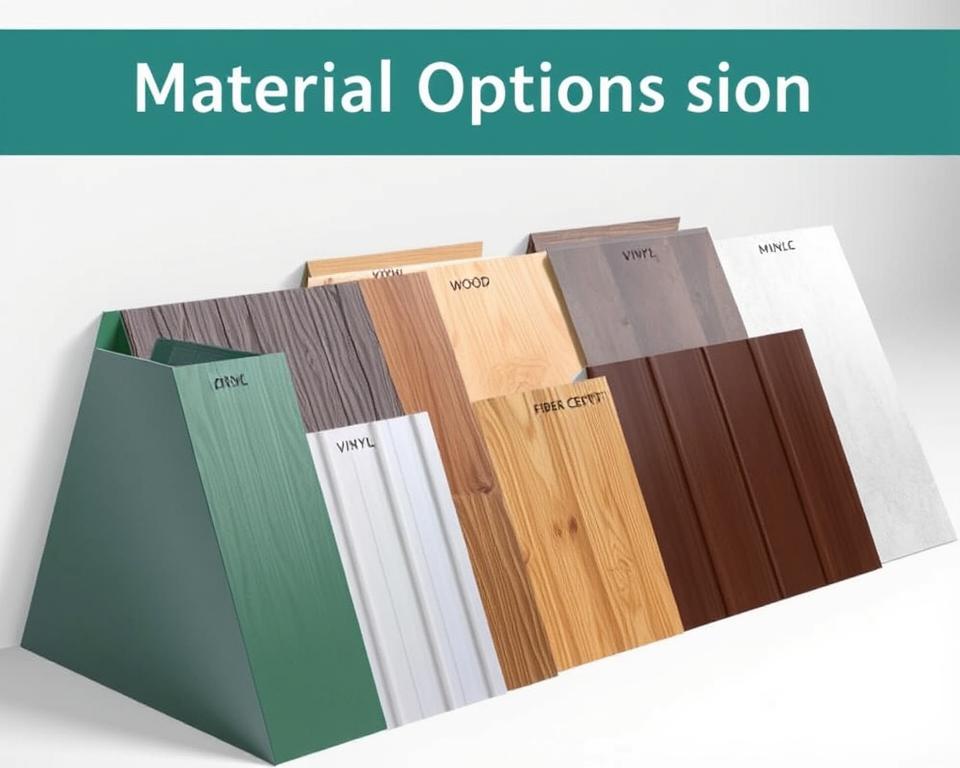
Vinyl Insulated Siding
Vinyl insulated siding is loved for being tough and easy to care for. It’s a smart pick for saving energy and money. You can find vinyl siding in many styles and colors, fitting any home.
Fiber Cement Insulated Options
Fiber cement siding is strong and fights off weather and pests well. It’s harder to put up than vinyl but looks natural. Fiber cement can be painted, letting you change its look to fit your home’s style.
Foam Backing Variations
Foam backing is key for keeping your home warm or cool. There are different kinds, like EPS or PIR, each with its own insulation level. The foam you choose can change how well your siding saves energy.
When picking insulated siding, think about your climate, budget, and what you like. Knowing the good and bad of each material helps you choose the best one for your home.
Key Benefits of Insulated Siding
Insulated siding is more than just a practical choice for your home’s exterior. It offers many benefits. Homeowners can enjoy a more comfortable, energy-efficient, and beautiful home.
Energy Efficiency Improvements
One big advantage of insulated siding is its energy-saving feature. It keeps your home’s temperature steady by blocking heat transfer. This means you use less energy to heat or cool your home, saving money and reducing carbon emissions.
Energy efficiency improvements are great for the planet and your wallet. You’ll see a big drop in your energy bills. This makes insulated siding a wise investment for the long run.
Noise Reduction Properties
Insulated siding also helps reduce outside noise. The insulation layer blocks out sounds, making your home quieter. This is really helpful if you live in a busy city or near a highway.
Impact Resistance and Durability
Insulated siding is strong and durable. The insulation adds extra strength, making it less likely to get damaged by weather or accidents. This means you’ll need to do less maintenance and repairs over time.
Aesthetic Improvements
Lastly, insulated siding can make your home look better. It comes in many styles and colors. You can pick one that matches your home’s look or changes it completely. Whether you want to modernize or just refresh your home’s look, insulated siding is a good choice.
| Benefit | Description | Advantage |
|---|---|---|
| Energy Efficiency | Reduces heat transfer | Lower utility bills |
| Noise Reduction | Acts as a barrier to external noise | Quieter living environment |
| Impact Resistance | Provides extra strength to the siding | Less maintenance and repair |
| Aesthetic Improvements | Available in various styles and colors | Enhanced curb appeal |
Cost Analysis: Is Insulated Siding Worth It?
To figure out if insulated siding is a good choice, we need to look at the costs carefully. We should think about the upfront costs and the long-term savings and benefits.
Initial Investment vs. Standard Siding
Insulated siding costs more than regular siding at first. The price difference can be 10% to 30% more, based on the material and quality. For example, insulated vinyl siding might cost $3 to $7 per square foot. Non-insulated vinyl siding could be $2 to $5 per square foot.
Even though it costs more at first, the long-term benefits can make up for it. It’s important to think about how it adds value to your home.
Long-Term Energy Savings
Insulated siding helps save energy. It keeps your home at a steady temperature, so you use less heat and air conditioning. Homeowners can save 10% to 20% on their energy bills, which adds up over time.
The U.S. Department of Energy says better insulation can cut heating and cooling costs by up to 30%.
Potential Tax Credits and Incentives
Installing energy-saving features like insulated siding might get you tax credits or incentives.
“The federal government offers tax credits for homeowners who make energy-efficient home improvements, which can include insulated siding.”
It’s key to check the latest tax laws and local incentives. They can lower the cost of your investment.
Maintenance Cost Considerations
Insulated siding saves energy and lasts longer, needing less upkeep than regular siding. This means lower maintenance costs over time. It’s also less likely to get damaged by weather, so you won’t need to fix or replace it as often.
Thinking about these points can help homeowners decide if insulated siding is right for them.
Return on Investment Considerations
Insulated siding offers many benefits, affecting a homeowner’s finances in different ways. It’s important to understand these financial aspects before making a decision.

Home Value Appreciation
Insulated siding can boost your home’s value. It makes your home look better and use less energy. This makes it more appealing to buyers.
Research shows that homes with modern siding sell for more. This makes it a smart choice for those planning to sell.
Energy Bill Reduction Over Time
Insulated siding helps save on energy costs. It keeps your home at a steady temperature, reducing the need for heating and cooling. This leads to lower energy bills over time.
Payback Period Analysis
Knowing the payback period is key. It’s the time it takes for energy savings to cover the siding cost. The payback period varies based on energy costs and savings.
By looking at these factors, homeowners can decide if insulated siding is right for them.
Climate and Home Factors Affecting Value
When thinking about insulated siding, it’s key to look at the climate, your home’s insulation, and its style. These things greatly affect how well insulated siding works and its value.
Regional Climate Considerations
Different areas need different insulation strategies. For example, homes in cold places get more benefit from insulated siding because it helps keep heat in. On the other hand, homes in warm areas might focus on features like UV protection.
Existing Home Insulation Assessment
The state of your home’s insulation is very important. If your home isn’t well-insulated, insulated siding can make a big difference in saving energy.
| Insulation Level | Benefit from Insulated Siding |
|---|---|
| Adequate | Moderate |
| Inadequate | Significant |
Age and Style of Home Impact
The age and style of your home matter too. Older homes might need extra work to fit insulated siding. Some styles look better with the aesthetic benefits of insulated siding.
Knowing these points helps homeowners decide if insulated siding is right for them.
Real Homeowner Experiences
Insulated siding is a big deal for homeowners. They love it for saving energy, lasting long, and looking great. It’s a top choice for many.
Success Stories and Satisfaction Rates
Homeowners are saving a lot of money with insulated siding. In Illinois, one family cut their heating bills by 25% in the first winter. Many are very happy with their choice.
“The difference was huge,” said Jane Doe from Ohio. “Our energy bills went down, and our home feels better all year.”
Common Complaints and Concerns
But, not everyone is thrilled. Some say it costs too much upfront. Others worry that colors might fade too fast.
But, companies are listening. Now, some offer warranties for up to 15 years on color. This helps with fading worries.
Despite some issues, most homeowners think insulated siding is worth it. It’s a smart choice for many.
Conclusion
Insulated siding brings many benefits to homeowners. It boosts your home’s energy efficiency and value. Knowing what it is and its advantages helps you decide if it’s right for you.
Insulated siding keeps your home warm in winter and cool in summer. This makes your home more comfortable. It also saves energy and money over time.
Deciding if insulated siding is worth it depends on your needs and budget. Think about your climate, your home’s current insulation, and energy savings. Insulated siding can make your home look and work better, making it a great choice for many.
